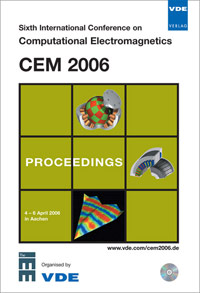Application of evolutionary algorithms for optimisation of electric machines
Konferenz: CEM 2006 - 6th International Conference on Computational Electromagnetics
04.04.2006 - 06.04.2006 in Aachen, Germany
Tagungsband: CEM 2006
Seiten: 2Sprache: EnglischTyp: PDF
Persönliche VDE-Mitglieder erhalten auf diesen Artikel 10% Rabatt
Autoren:
Dabrowski, Miroslaw (Poznan University of Technology, Poland)
Rudenski, Andrzej (Institute of Electrical Engineering, Warsaw, Poland)
Inhalt:
This paper presents an application of evolutionary methods for optimisation of tree-phase and the single-phase induction motors by means of non-linear programming with the turn number and the wire diameters of the windings treated as independent discrete variables. The algorithms: two evolution strategies; (μ+λ)-ES and (μ λ)-ES as well as the modified genetic algorithm with the floating point representation of genes in chromosomes were tested for effectiveness and compared. An influence on the obtained results of the number of individuals in a population, of the generation number, and of various genetic operators applied, has been tested. As an example the calculation results of optimisation of the three-phase motor of 15 kW rated power and two single-phase motors of 0,55 and 4 kW rated power, are presented. As a result of the calculation experiments, the evolutionary algorithm and its parameters mostly suitable for design of the considered electric machines have been selected. The calculations indicate that the evolutionary methods are effectively applicable to the optimisation of the electric machines, as they allow for discrete variables in the design process. In particular it has been proved that application of the strategies (μ+λ)-ES and (μ λ)-ES ensures good results with small standard deviation with adequately big number of individuals in population(parent and offspring). Most advantageous parents to offspring number ratio is about two for strategy (μ+λ)-ES and about six for strategy (μ λ)-ES. Taking the calculation time into account6 one can admit, that the best algorithm for the optimisation of electric machines is the strategy (μ+λ)-ES.


